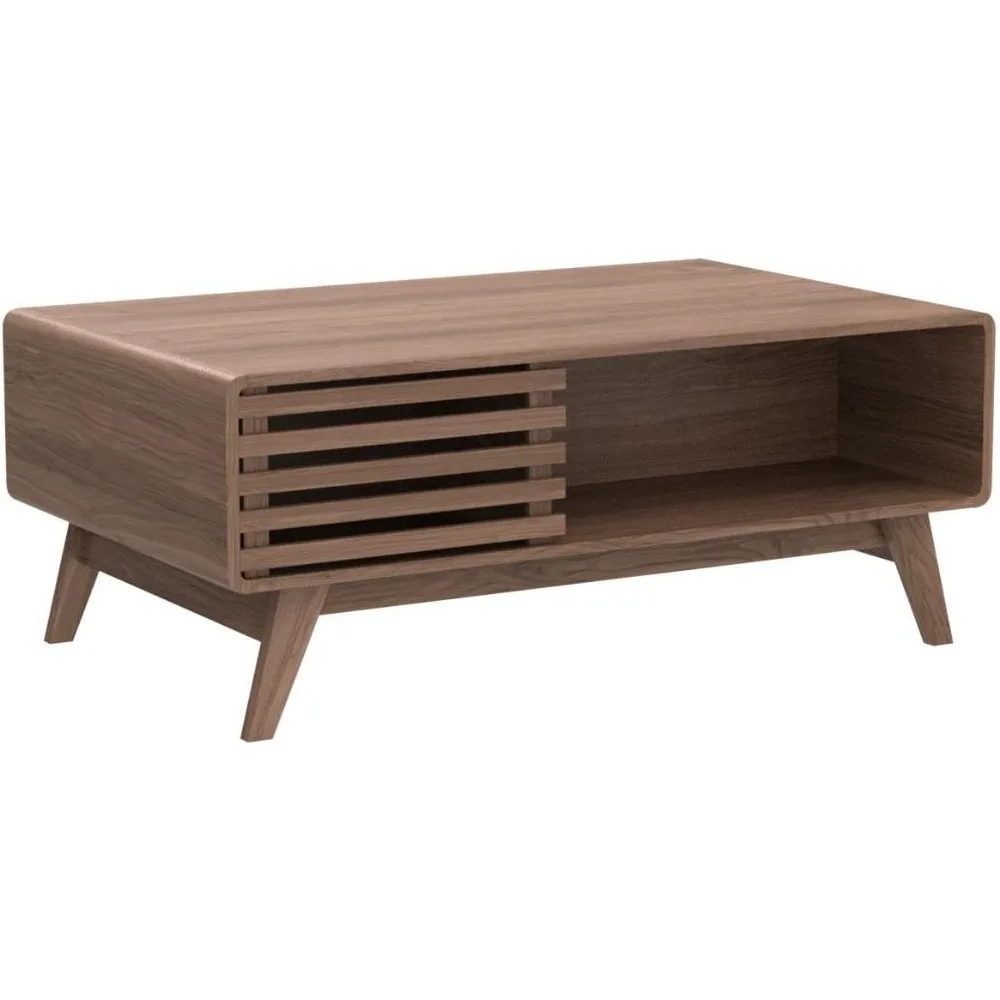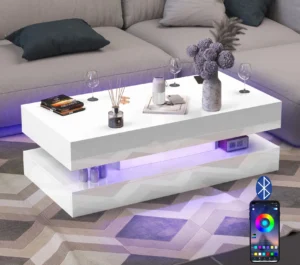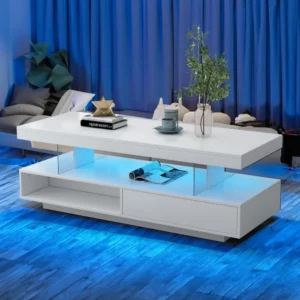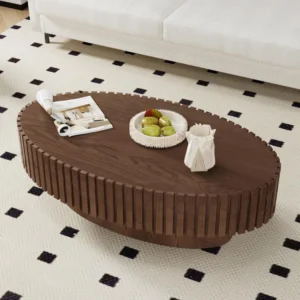The Timeless Value of Authentic Teak Coffee Tables
Teak stands as one of the most prized hardwoods in the furniture world, especially for coffee tables that serve as centerpieces in living spaces. Its rich golden-honey tones and distinctive grain patterns have made it a cornerstone of mid-century modern design, where clean lines and natural materials create pieces that are both functional and artistic. Unlike mass-produced alternatives that might look appealing initially but deteriorate quickly, a genuine teak coffee table represents a true investment—one that can maintain its beauty and structural integrity for generations.
What makes teak truly exceptional goes beyond mere aesthetics. The wood contains natural oils that provide remarkable resistance to moisture, insects, and decay without any chemical treatments. This inherent durability explains why many intelligent black mid-century coffee tables featuring teak elements continue to look stunning decades after their creation. When properly cared for, a quality teak coffee table can easily last 50+ years, becoming a family heirloom rather than a disposable purchase.
This guide aims to equip you with the knowledge needed to identify truly high-quality teak coffee tables and avoid inferior products that merely imitate the real thing. Understanding what makes genuine teak special will help you make a confident investment in a piece that will serve you beautifully for years to come. Browse our collection of mid-century modern teak coffee tables to see authentic examples of this timeless material in stunning designs.
The Essential Teak Quality Checklist
Before diving into specific details, understanding the key indicators of quality in teak coffee tables will provide a framework for your assessment. A truly exceptional teak coffee table combines premium materials with expert craftsmanship—neither can compensate for deficiencies in the other.
When evaluating teak coffee tables, focus on these fundamental quality markers that we’ll explore in greater depth throughout this guide:
- Natural oil content and characteristic honey-gold color
- Tight, straight grain patterns with minimal knots
- Substantial weight and density that indicates mature wood
- Precise joinery techniques that ensure structural integrity
- Proper kiln drying to prevent future warping or cracking
- Smooth, consistent finishing that enhances the wood’s natural beauty
The principles used when styling black mid-century coffee tables apply equally to teak pieces—quality materials and construction should be complemented by thoughtful design that balances form and function.
Recognizing Premium Teak Wood Characteristics
High-quality teak wood displays distinct visual and physical characteristics that distinguish it from lower-grade alternatives or imitations. Premium teak typically exhibits a warm golden-brown to honey color when freshly cut and milled. This color naturally evolves over time into a distinguished silvery-gray patina if left untreated outdoors, or a deeper amber tone if kept indoors. Consistent coloration throughout the piece generally indicates higher quality, though subtle variations are natural and expected.
The grain pattern offers significant clues about quality. Superior teak features straight, tight grain with uniform patterns and minimal interruptions. This not only creates a more aesthetically pleasing appearance but also indicates stronger structural properties. When examining teak, look for grain lines that run relatively parallel rather than irregular or wavy patterns, which might suggest younger or inferior wood.
Genuine teak has a distinctive smooth, slightly oily feel due to its natural oil content. This tactile quality isn’t just pleasant to touch—it’s functional evidence of the wood’s weather resistance and durability. Quality teak should feel substantial and dense when lifted, typically weighing between 40-45 pounds per cubic foot (640-720 kg per cubic meter). This density contributes to the furniture’s stability and longevity.
| Characteristic | Fresh Quality Teak | Aged Quality Teak | Poor Quality/Imitation |
|---|---|---|---|
| Color | Golden-brown to honey | Silver-gray (outdoor) or amber (indoor) | Inconsistent, artificially uniform, or overly red |
| Grain | Straight, tight, uniform | Consistent with subtle weathering | Irregular, wide, or painted-on patterns |
| Feel | Smooth with natural oiliness | Slightly rough but even texture | Rough, dry, or artificially slick |
| Weight | Heavy, substantial | Heavy, substantial | Noticeably light |
| Aroma | Subtle leather-like, earthy | Mild or faded leather scent | No distinctive smell or chemical odor |
For comparison with other premium materials, browse our mid-century modern solid wood coffee tables to see how teak compares to other hardwoods in terms of appearance and construction.
Evaluating Expert Craftsmanship in Teak Furniture
The quality of construction is equally important as the wood itself when assessing teak coffee tables. Expert craftspeople employ time-tested joinery techniques that ensure stability and longevity. The most respected methods include mortise and tenon joints (where a protruding “tenon” fits precisely into a carved “mortise” slot) and dovetail joints (where interlocking “tails” and “pins” create a virtually unbreakable connection). These traditional techniques distribute weight evenly and allow the wood to naturally expand and contract with humidity changes without compromising structural integrity.
Examine the table’s hardware carefully. Quality teak furniture features corrosion-resistant brass or stainless steel components that sit flush with the wood surface. Screws should be properly recessed, and there should be no visible glue residue. Hardware shouldn’t be the primary structural support—rather, it should complement proper wood joinery.
To assess stability, gently rock the table to check for wobbling. A well-made teak coffee table remains steady on even flooring. Any excessive movement indicates potential problems with the frame alignment or joint construction. The surface should be level, with legs making full contact with the floor.
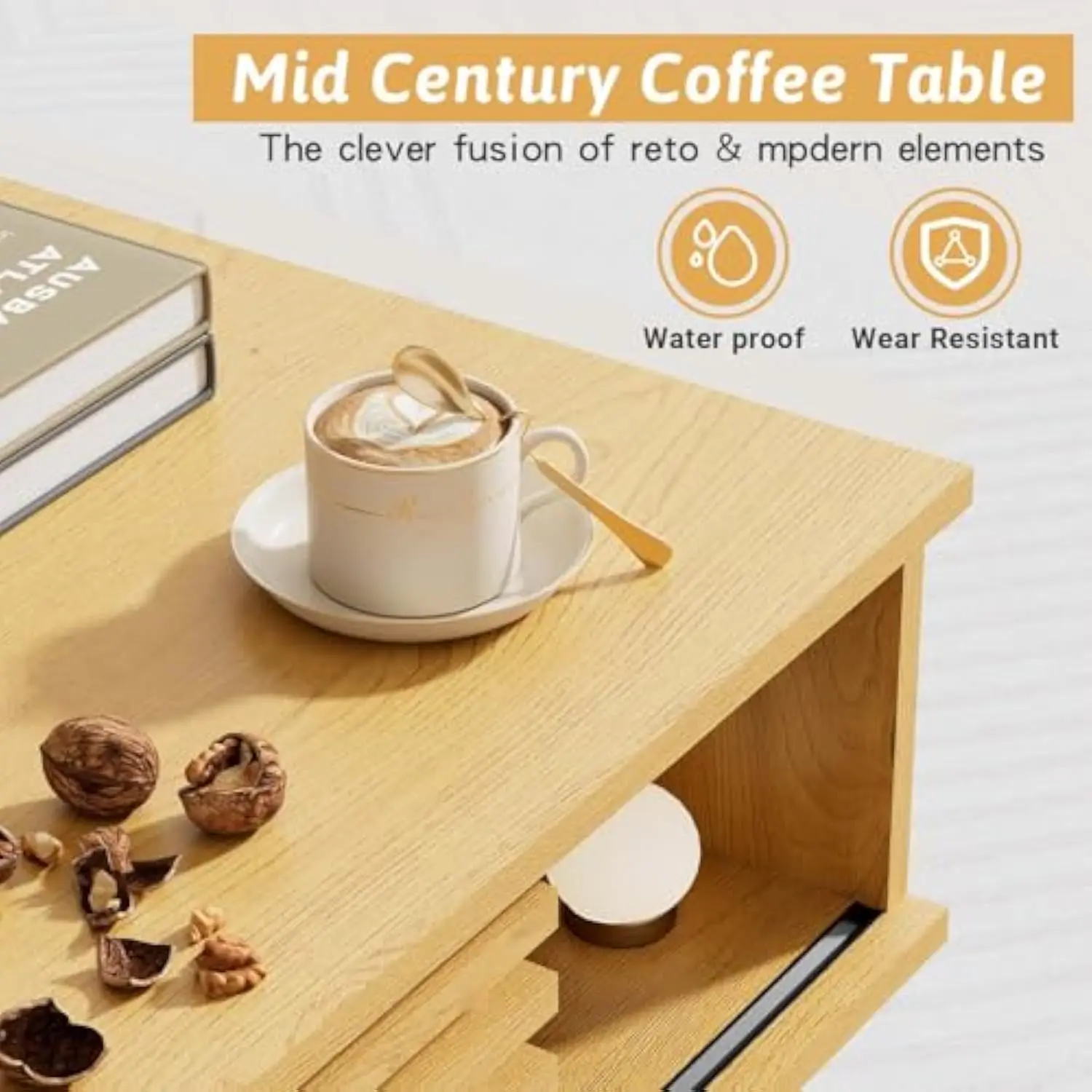
The finishing quality reveals much about the manufacturer’s attention to detail. Premium teak coffee tables feature smooth, consistently applied finishes with no rough patches, drips, or uneven coloration. Many high-quality pieces showcase hand-rubbed oil finishes that enhance the wood’s natural beauty without creating an artificial plastic-like surface.
Proper kiln drying—bringing wood to an optimal moisture content of 8-12%—is crucial for preventing future warping, splitting, or cracking. While this isn’t immediately visible, understanding a manufacturer’s drying process can predict how well the table will maintain its integrity over time. The principles that make black mid-century coffee table design so enduring also apply to teak pieces—thoughtful construction techniques that prioritize both beauty and longevity.
Understanding Teak Material Classifications
Not all furniture marketed as “teak” offers the same quality or longevity. Understanding the different classifications helps you make informed decisions and set appropriate expectations for both performance and price.
Solid teak construction represents the gold standard. These pieces are crafted entirely from teak throughout—not just on visible surfaces. The entire structure benefits from teak’s natural durability and resistance to moisture, insects, and decay. Solid teak furniture typically lasts for generations with proper care, with its value often increasing over time. To identify solid teak, check the underside and edges of the table—the grain pattern should continue consistently across all surfaces.
Teak veneer consists of a thin layer of genuine teak bonded to a substrate of less expensive wood or engineered material. While this offers the authentic appearance of teak at a lower price point, veneer doesn’t provide the same durability or longevity as solid wood. Veneer can chip or peel over time, especially in humid environments. To identify veneer, examine the edges carefully—you may notice a distinct layer where the teak surface meets the core material.
Reclaimed teak comes from dismantled structures, old boats, or previously used furniture. This environmentally friendly option gives new life to existing materials and often features unique character marks that tell a story. Quality varies widely in reclaimed teak furniture—some pieces maintain excellent structural integrity while others may have hidden damage or weaknesses. The distinctive weathered appearance typically commands premium prices despite being repurposed material.
For comparison with another premium hardwood option, explore our mid-century modern walnut coffee tables to understand how different wood types compare in appearance and properties.
The Teak Grading System Decoded: A, B, and C
The teak grading system provides a standardized way to evaluate quality, though these designations aren’t always openly advertised by retailers. Understanding this system helps you assess value and set appropriate expectations.
Grade A teak represents the highest quality available. Harvested from the heart of mature trees (typically 20+ years old), this premium wood features maximum natural oil content, minimal knots, and the most consistent golden-brown color. Its tight, straight grain patterns offer superior strength and resistance to warping. Grade A teak comes primarily from the lower trunk section where the wood has developed to its fullest potential. This grade commands the highest prices but delivers unmatched durability and appearance.
Grade B teak, sourced from the outer heartwood sections of mature trees, offers good quality at a more accessible price point. While still featuring natural oils and resistance to decay, it may contain more color variations, knots, and slightly less uniform grain patterns. Furniture made from Grade B teak still provides excellent longevity but may not have the perfect uniformity of Grade A wood.
Grade C teak comes from the sapwood (outer portions of the tree) and younger trees. With significantly lower natural oil content, this grade lacks the inherent weather resistance and durability of higher grades. It typically shows more pronounced color variations, knots, and inconsistent grain. While less expensive, Grade C teak requires more maintenance and has a substantially shorter lifespan compared to Grades A and B.
| Characteristic | Grade A Teak | Grade B Teak | Grade C Teak |
|---|---|---|---|
| Source | Heartwood of mature trees | Outer heartwood | Sapwood and younger trees |
| Color | Uniform golden-brown | Slight variations | Noticeable variations |
| Oil Content | High | Moderate | Minimal |
| Grain Pattern | Tight, straight, consistent | Generally straight with some variation | Inconsistent, potentially wavy |
| Knots | Minimal to none | Occasional small knots | More frequent and larger knots |
| Durability | 50+ years with proper care | 25-40 years with proper care | 10-20 years with proper care |
| Relative Price | Highest | Moderate | Lowest |
To see how these quality differences manifest in finished pieces, explore our collection of top teak coffee table styles featuring different grades and construction techniques.
Warning Signs: Spotting Low-Quality Teak Tables
Recognizing red flags can save you from an expensive disappointment when shopping for teak coffee tables. Here are key warning signs that indicate poor quality or misrepresented products:
Excessive knots or filler materials: While small, tight knots may be acceptable in Grade B teak, numerous or large knots indicate inferior wood. Look for wood putty or filler used to mask defects.
Inconsistent or artificial coloration: Natural teak has subtle variations, but dramatic color differences within a single piece often indicate poor quality or artificial staining. Overly uniform color throughout might suggest chemical treatment or dyes.
Lightweight construction: Authentic teak is naturally dense and heavy. If a supposedly solid teak table feels surprisingly light, it likely contains inferior materials or is primarily constructed from something other than teak.
Visible glue excess: Quality craftsmanship leaves minimal or no visible glue residue. Excess glue at joints often compensates for poor-fitting connections.
Rough or inconsistent finishing: Premium teak furniture features smooth, uniform surfaces. Rough patches, splinters, or uneven finishes indicate rushed production and poor attention to detail.
Misaligned joints: Gaps, spaces between connecting pieces, or joints that don’t fit flush suggest hasty construction that will likely fail over time.
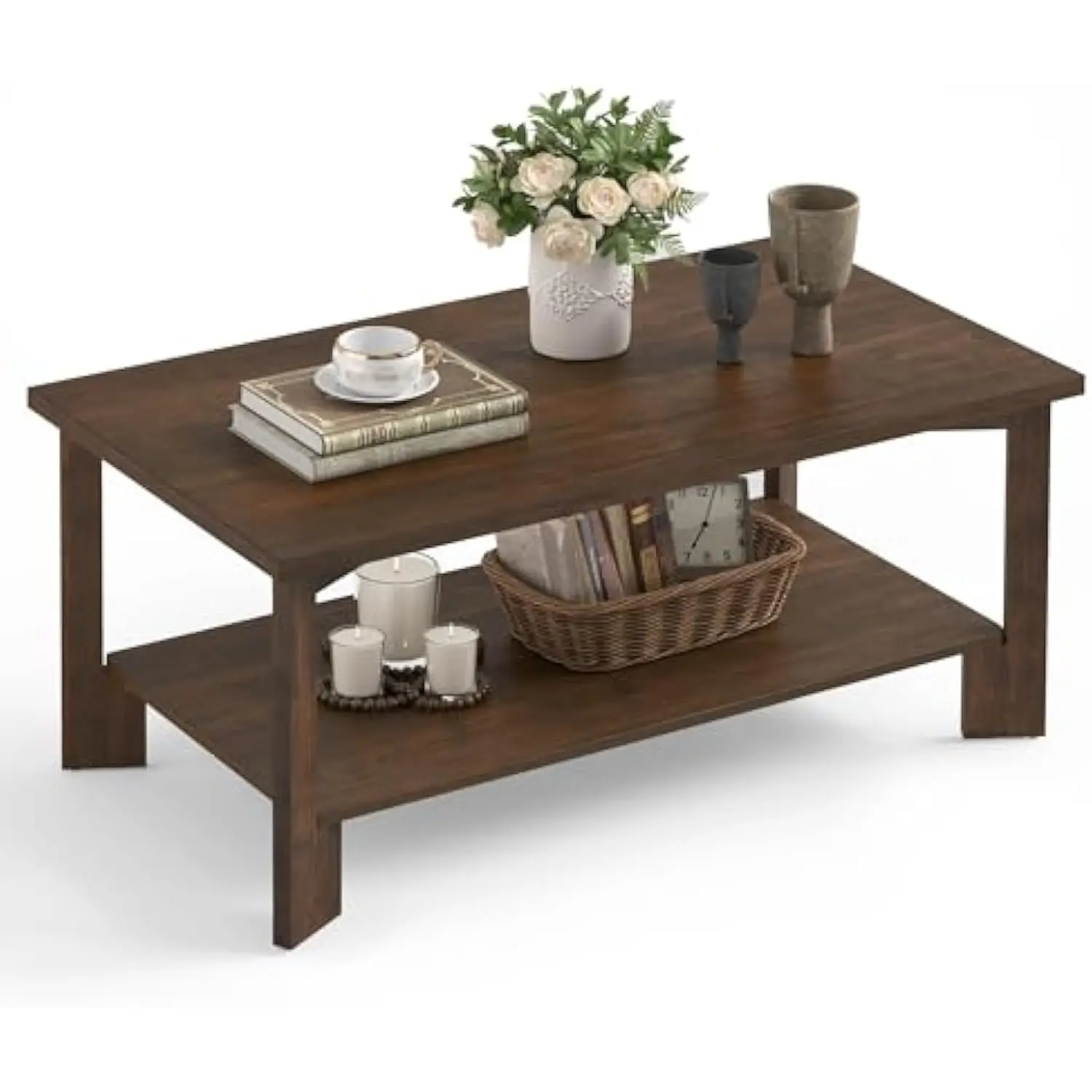
Unpleasant or chemical smell: Quality teak has a subtle, pleasant leather-like aroma. Strong chemical odors indicate recent treatment with preservatives or artificial coloring agents.
Suspiciously low pricing: When a teak coffee table is priced significantly lower than comparable options, there’s usually a quality compromise involved. Genuine Grade A teak commands premium prices due to its scarcity and desirable properties.
Understanding these warning signs complements the knowledge gained from decorating black mid-century coffee tables, where quality materials form the foundation for lasting style.
Simple Tests to Verify Genuine Teak
When examining potential teak coffee table purchases, several simple tests can help confirm authenticity and quality:
The water test: Place a few drops of water on an inconspicuous area of the wood. On genuine teak, water should bead up temporarily due to natural oils rather than immediately soaking in. After a few minutes, the water will gradually absorb without leaving a noticeable stain.
The touch test: Run your hand across the surface. Authentic teak feels naturally smooth with a slightly oily or waxy texture even without applied finishes. This distinctive feel comes from the wood’s natural oils.
The aroma assessment: In an unfinished or freshly cut area (like the underside), genuine teak produces a characteristic leather-like, slightly spicy scent. This subtle fragrance differs noticeably from other woods and cannot be easily replicated in imitations.
The scratch test: In a hidden location, make a tiny scratch with your fingernail. Real teak shows a consistent color below the surface rather than revealing a dramatically different shade that would indicate surface staining.
The weight evaluation: Pick up the piece if possible. Quality teak feels substantially heavier than most other woods of the same size due to its density. A surprisingly lightweight “teak” piece should raise suspicion.
For additional context on quality construction in different styles, browse our selection of mid-century modern rectangular coffee tables which showcase various authentic wood options.
Empowering Questions to Ask Before Purchase
Armed with knowledge about quality indicators, asking the right questions can help ensure you’re making a sound investment. Here are key inquiries that can reveal much about a teak coffee table’s quality:
“What grade of teak is used in this piece?” (Look for specific answers about Grade A, B, or mixed grades rather than vague claims of “high quality”)
“Is this solid teak throughout or are veneers used in any portion?” (An honest seller will clearly disclose construction methods)
“Where was the teak sourced from, and does it have any sustainability certifications?” (Legitimate dealers can typically provide specific sourcing information)
“What joining techniques were used in construction?” (Quality manufacturers proudly explain their craftsmanship methods)
“How was the wood dried, and to what moisture content?” (Look for specific answers about kiln drying to 8-12% moisture content)
“What type of finish has been applied, and what maintenance is recommended?” (This reveals both current quality and future care requirements)
“What warranty is offered, and what specifically does it cover?” (Longer, more comprehensive warranties typically indicate manufacturer confidence in quality)
These questions not only gather important information but also gauge the seller’s knowledge and transparency. Reputable sellers of quality furniture welcome such inquiries rather than providing vague or dismissive responses. For additional insights about what makes teak pieces special, explore our article on unveiling timeless elegance: teak coffee tables.
Sustainability and Ethical Sourcing of Teak
The quality of teak furniture increasingly includes ethical considerations about sourcing and environmental impact. As teak has faced overharvesting in some regions, sustainability certifications provide assurance that your beautiful coffee table hasn’t contributed to environmental degradation.
The Forest Stewardship Council (FSC) certification represents the gold standard for responsibly harvested wood products. FSC-certified teak comes from forests managed to ensure long-term viability, environmental protection, and fair treatment of workers. This certification involves strict chain-of-custody documentation from forest to final product, ensuring authenticity throughout the process.
Another important certification is SVLK (Sistem Verifikasi Legalitas Kayu), Indonesia’s timber legality assurance system. Since Indonesia produces a significant portion of the world’s teak, this certification helps confirm legal harvesting and processing. SVLK-certified products comply with regulations designed to combat illegal logging.
Plantation-grown teak offers another sustainable alternative to old-growth forest harvesting. While sometimes showing slightly different characteristics than old-growth teak, quality plantation teak still provides excellent durability when properly grown and processed. Some of the finest furniture makers now use carefully managed plantation teak for their premium pieces.
Importantly, there’s often a correlation between ethical sourcing and quality—companies invested in responsible forestry practices typically maintain high standards throughout their production process, resulting in superior furniture.
Understanding Teak’s Natural Aging and Patina
One of teak’s most distinctive qualities is how it ages and develops character over time. When left untreated, teak naturally transforms from golden honey tones to a distinguished silvery-gray patina, especially when exposed to sunlight and weather. This change doesn’t indicate deterioration—it’s simply the wood’s surface reaction to environmental exposure while the structural integrity remains intact.
For indoor teak coffee tables, the aging process is more subtle, typically deepening to richer amber tones rather than silvering. This natural evolution creates unique character and often enhances the wood’s beauty over decades of use. Many teak enthusiasts specifically prize this aging process and choose to let it progress naturally.
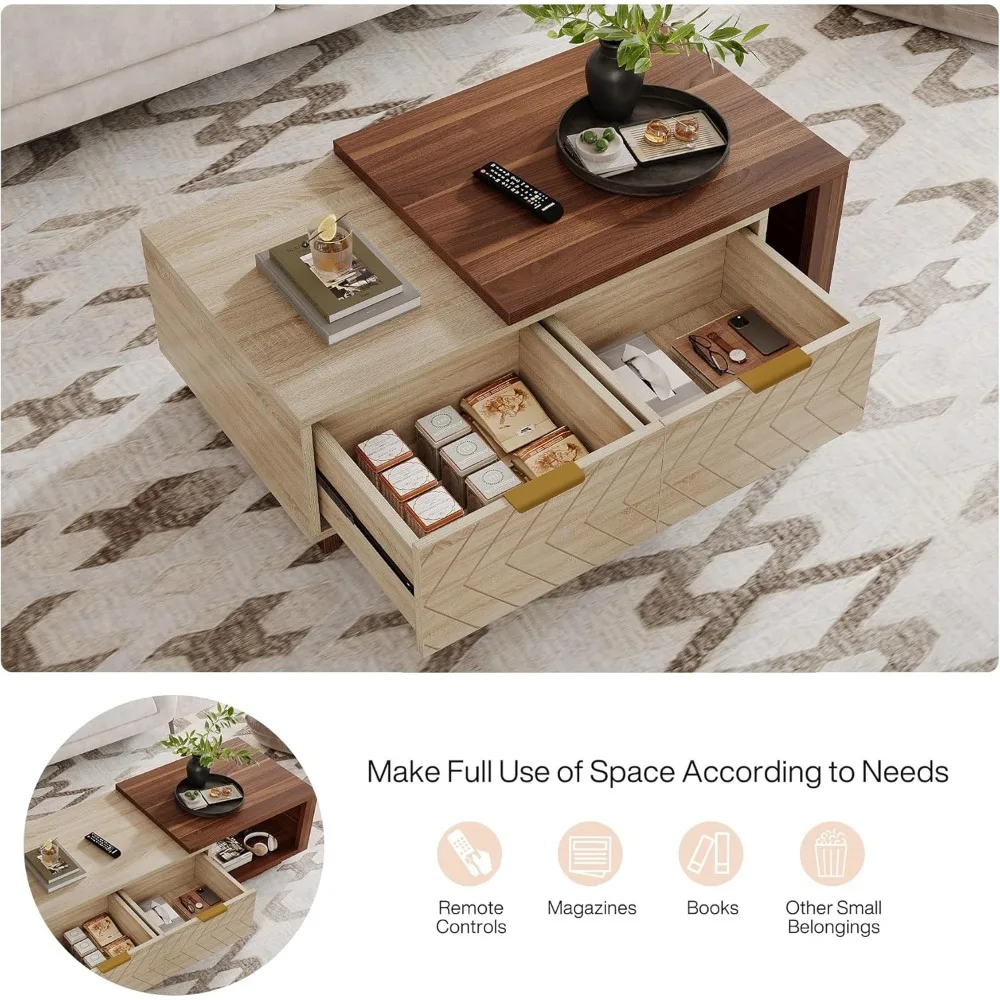
Basic maintenance for quality teak is surprisingly simple. Regular dusting and occasional cleaning with mild soap and water is typically sufficient. For indoor pieces, applying a specialized teak oil once or twice yearly can maintain the original golden color if preferred, though this isn’t necessary for structural preservation.
For those who appreciate both teak and distinctive design, our collection of mid-century modern Danish coffee tables showcases how quality teak has been incorporated into some of the most iconic furniture designs of the 20th century.
Mid-Century Modern Solid Wood Coffee Tables, Mid-Century Modern Teak Coffee Tables
$879.95 Select options This product has multiple variants. The options may be chosen on the product pageMid-Century Modern Danish Coffee Tables, Mid-Century Modern Oval Coffee Tables, Mid-Century Modern Solid Wood Coffee Tables
$390.05 Select options This product has multiple variants. The options may be chosen on the product pageMid-Century Modern Large Coffee Tables, Mid-Century Modern Rectangular Coffee Tables
$603.26 Select options This product has multiple variants. The options may be chosen on the product pageMid-Century Modern Marble Top Coffee Tables, Mid-Century Modern Rectangular Coffee Tables, Mid-Century Modern White Coffee Tables
Price range: $163.28 through $189.22 Select options This product has multiple variants. The options may be chosen on the product pageMid-Century Modern Rectangular Coffee Tables, Mid-Century Modern White Coffee Tables
$605.68 Select options This product has multiple variants. The options may be chosen on the product pageMid-Century Modern Oval Coffee Tables, Mid-Century Modern Solid Wood Coffee Tables
$679.56 Select options This product has multiple variants. The options may be chosen on the product page
Essential Teak Terminology for Informed Buyers
Familiarity with key terminology helps you navigate descriptions and ask informed questions when shopping for teak coffee tables:
Heartwood: The innermost section of the trunk, producing the highest quality teak with maximum oil content and durability.
Kiln-dried: Wood that has been carefully dried in controlled conditions to reach optimal moisture content (8-12%), preventing future warping or cracking.
Mortise and tenon: A traditional joinery technique where a protruding “tenon” fits precisely into a carved “mortise” slot, creating exceptionally strong connections.
Patina: The natural color transformation that occurs as teak ages, typically resulting in a silvery-gray surface outdoors or deeper amber tones indoors.
Quarter-sawn: A cutting method that produces boards with grain running perpendicular to the face, resulting in greater stability and distinctive grain patterns.
Sapwood: The outer layers of the tree trunk, producing lower-grade teak with less oil content and durability than heartwood.
Silica content: Natural mineral deposits in teak that contribute to its durability but can dull tools during manufacturing, requiring specialized equipment.
Tectona grandis: The botanical name for genuine teak, distinguishing it from other woods sometimes marketed as “teak.”
Veneer: A thin layer of teak applied over a different wood or engineered substrate, providing the appearance but not the full benefits of solid teak.
How to Make Your Final Quality Assessment
When making your final decision, integrate all aspects of quality assessment into a comprehensive evaluation tailored to your specific needs and budget:
Begin with wood quality assessment, examining color consistency, grain pattern, and natural oil content. Remember that Grade A teak commands premium prices but delivers unmatched durability and beauty.
Thoroughly evaluate construction methods, paying special attention to joinery techniques at stress points. Quality craftsmanship can partially compensate for lower-grade materials, but the reverse isn’t true—even the finest teak won’t overcome poor construction.
Consider your specific usage environment. Indoor tables in climate-controlled settings allow more flexibility in teak grade than pieces subjected to humidity fluctuations or outdoor exposure.
Balance aesthetic preferences with practical considerations. The most beautiful grain pattern may not be worth the investment if the piece lacks structural integrity for your intended use.
Use this quality assessment checklist during your final evaluation:
* Consistent color with natural variations
* Straight, tight grain patterns
* Smooth surface with slight natural oiliness
* Substantial weight appropriate to size
* Precision joinery with no gaps
* Flush-fitting hardware with no visible glue
* Stability when gently tested
* Appropriate certification documentation
* Transparent information about materials and construction
* Reasonable warranty reflecting quality claims
By methodically evaluating these factors, you’ll be well-equipped to identify truly exceptional teak coffee tables worth their premium price—pieces that will provide both functionality and beauty for generations to come. At Hearth Forms, we believe that understanding quality helps customers make choices they’ll appreciate for years to come.

